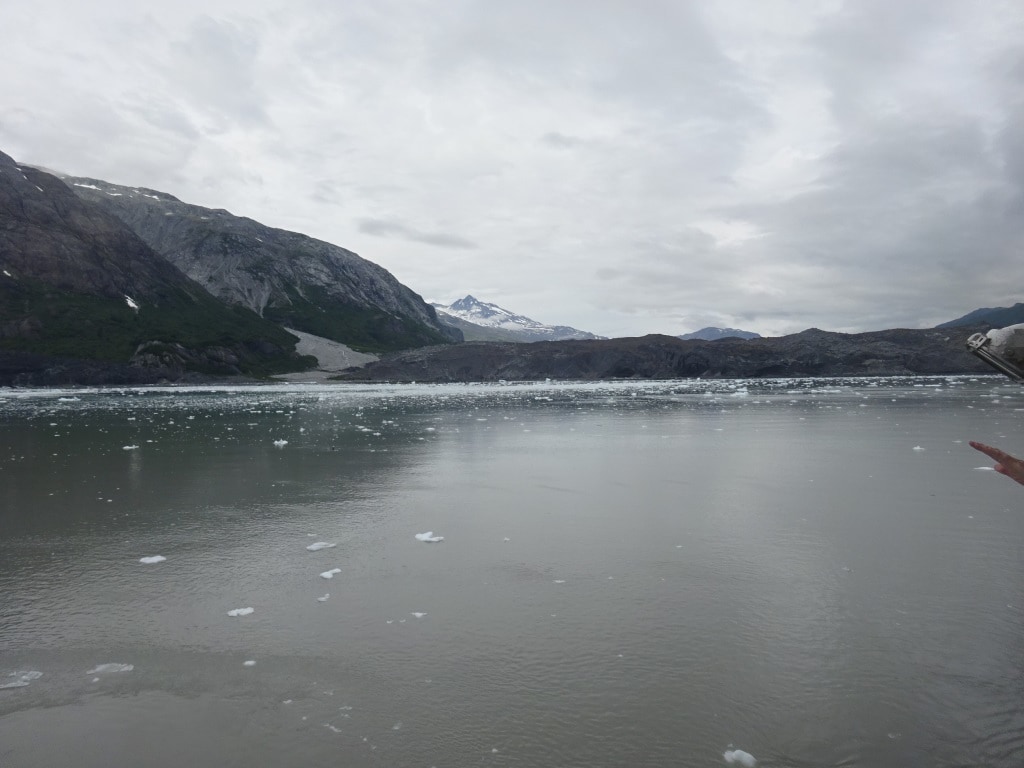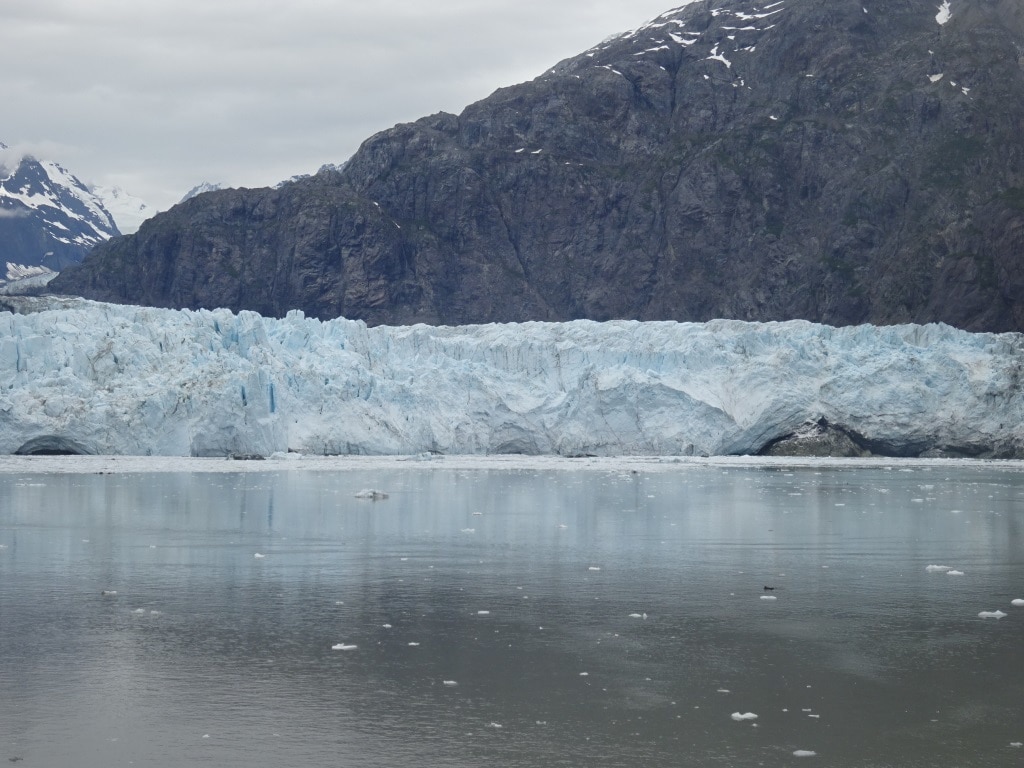If you look at the map, sailing from Ketchikan to open sea is a sort of Zig-Zag happening in a vertical way. From Ketchikan we go down, around Cape Decision, and then up to Juneau. Then we have to go out of Juneau again and around the corner up to Skagway. From there we go down again around the corner and up into Glacier Bay. This afternoon we go down again out of Glacier Bay, sail westwards through the Gulf of Alaska and then up into Resurrection Bay to Seward. Nearly all the fjord and inlets in Alaska have a North South orientation and that makes sense as most of them have been carved out by glaciers. And the glaciers run North South as all the cold comes from the North Pole and stretches south from there.
So when we left Skagway we sailed south through Lynn Canal and then around the corner to Glacier Bay via Icy Strait. Not that we saw much of it as it was foggy all the way. As a result the captain was quite busy with letting the world know he was working by pulling the fog horn every two minutes with two long blasts. One blast is the attention signal in the collision regulations or coll-regs. Then by adding a second one in a two minute cycle everybody around knows that it is a fog signal of a ship that is moving through the water. If a ship is at anchor, then you ring the ships bell every minute for at least 5 seconds, for that reason the ships bell is always located at the bow, and with a longer ship you also beat a gong at the stern. We seldom use those two signals. as we seldom are at anchor in the fog. While at anchor in the fog you are also allowed to give in addition, a whistle signal, the R in Morse code: short – long –short.

Glacier Bay, looking towards the Grand Pacific Glacier which is almost black due to all the debris it carries down from the mountain. The white ice in front comes from the Marjorie Glacier.
The past night and early morning we sailed and did not anchor, so honking the horn twice every two minutes was enough. As expected the fog cleared once we entered the bay and we could expect that because there water temperature changes due to could water outflow from the glaciers. In Icy Strait (that name stems from the day, that the whole of Glacier Bay was a Glacier and the calving ice drifted through this “Icy Strait” to open sea) the water tends to be a little bit warmer due to the Pacific Ocean water coming in. That is not a complete proof of theory because the moment the air temperature rises fog can occur due to other temperature fluctuations again. I have sailed into Glacier Bay with nice weather and the fog and haze did not lift until we were in the upper bay and very close to the glaciers.
But today the white clouds lifted and were replaced with a gloomy visibility until we came higher up in the bay and we had overcast but nice weather. The verdict will always be out there; what is better for Glacier Bay, sunny and warm, or Overcast and cool. I tend to vote for the latter, not because I want to deprive guests of a sunny Glacier Bay experience, but with overcast weather the photos tend to come out better. Sun reflects of the ice and then you need to be a good photographer to get a natural photo without glare. As most of our guests use their tablets or small digital cameras, overcast weather tends to work better in general.

To the left the tunnel for the water outflow. To the right the rock which has been visible this year for the first time because the Glacier has retreated so much.
I reported last week that Marjorie Glacier had a large pinnacle sticking out in the middle; well it fell the next day and now we can really see that the Glacier has retreated considerably since last year. Also the river under the glacier has moved. Each glacier has a sort of tunnel under it, through which the melting water from the underside of the glacier flows. This water is also helping the Glacier to move forward. The tunnel is normally visible at low tide and last year it was almost in the middle of the Glacier. Since then it has moved towards the South side and today we could see it as we arrived at the Glacier face at nearly low tide.
Tomorrow we are at sea and we will cross the Gulf of Alaska. There is a high pressure system building further up north and that means for tomorrow it will be nearly wind still in the Gulf. Then the wind will start picking up but only as a summer breeze. If it all works out we might even have a nice day in Seward.

Leave a Reply